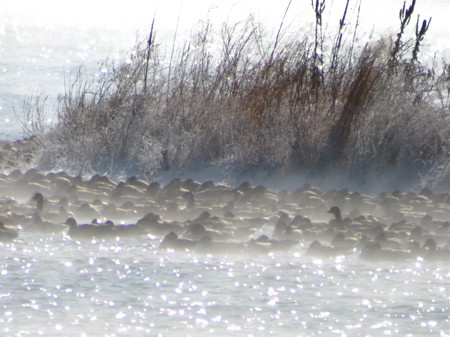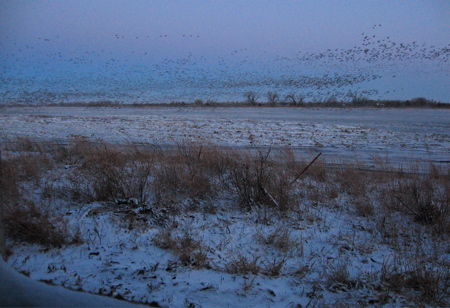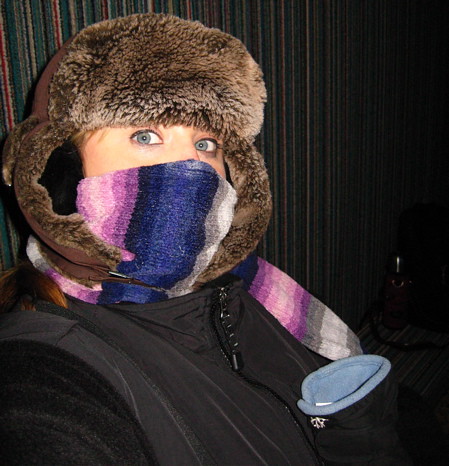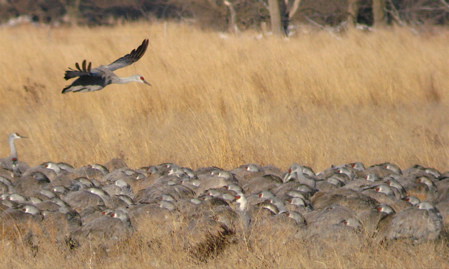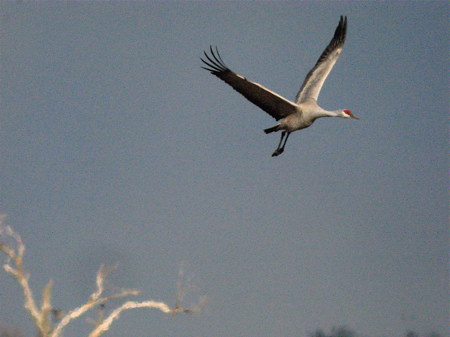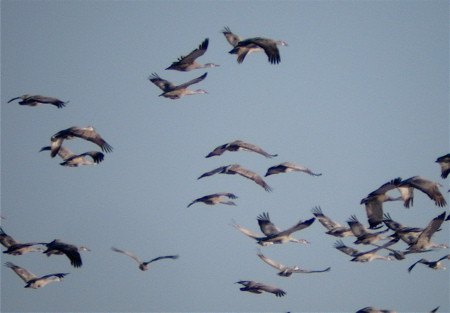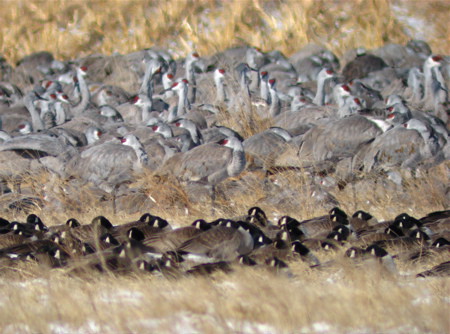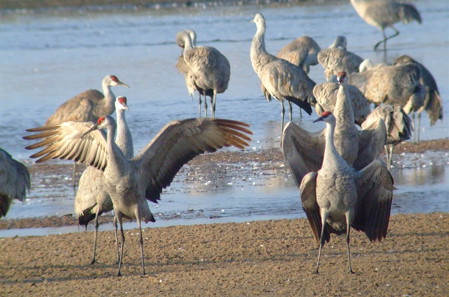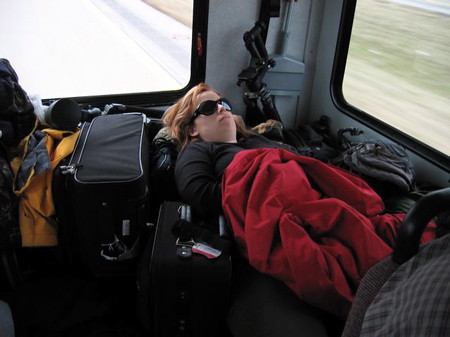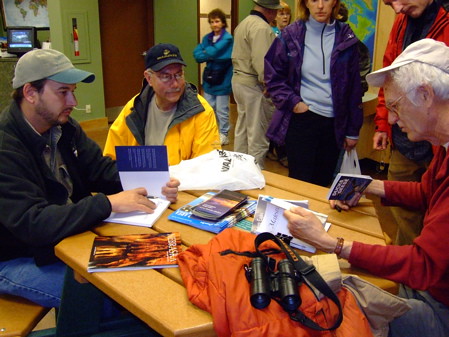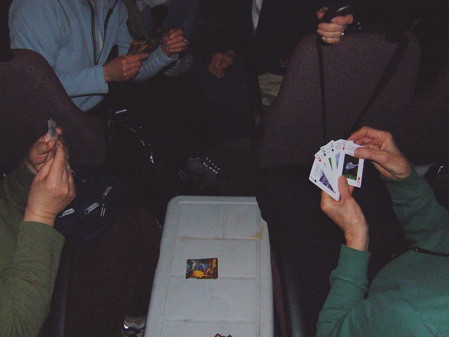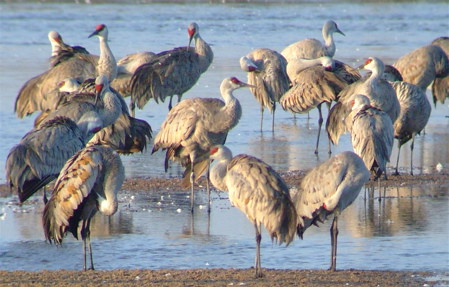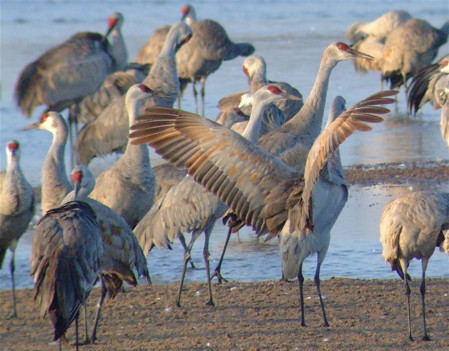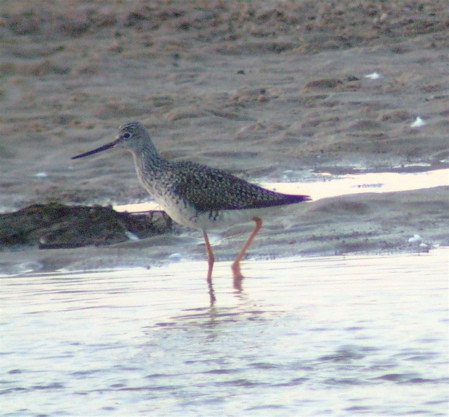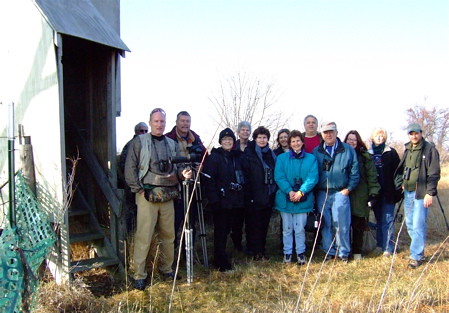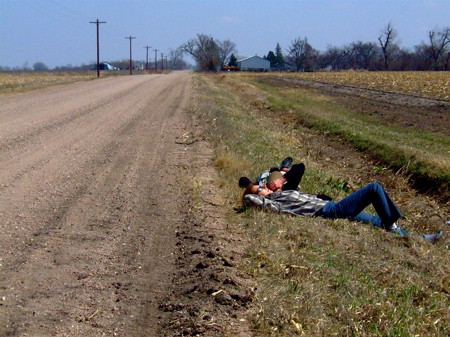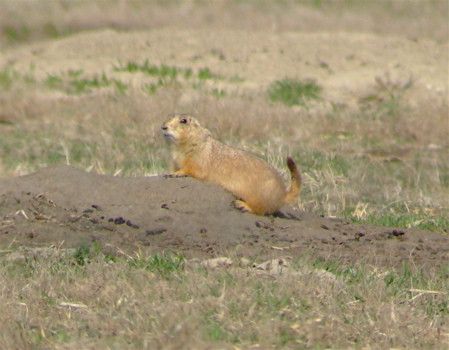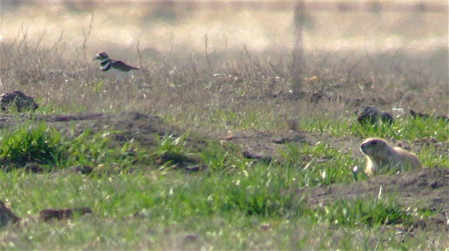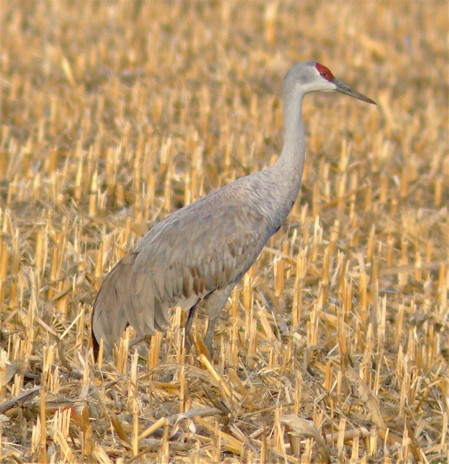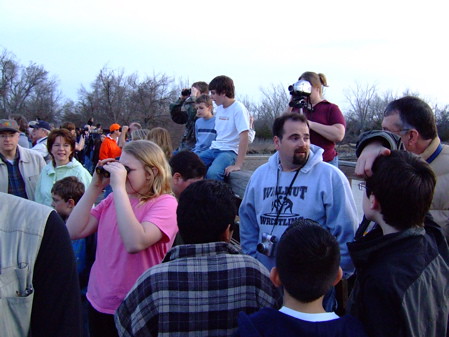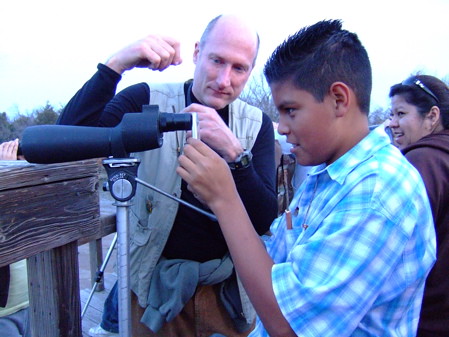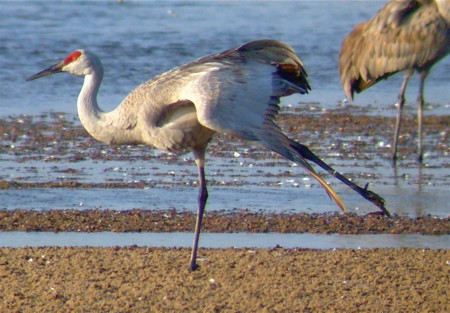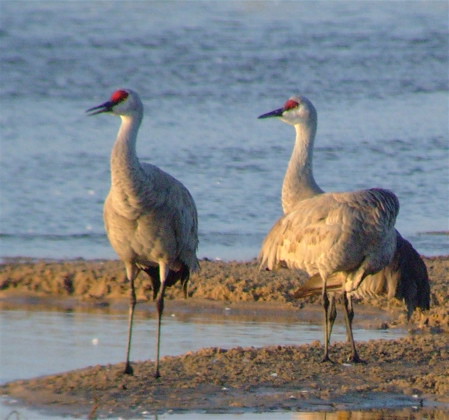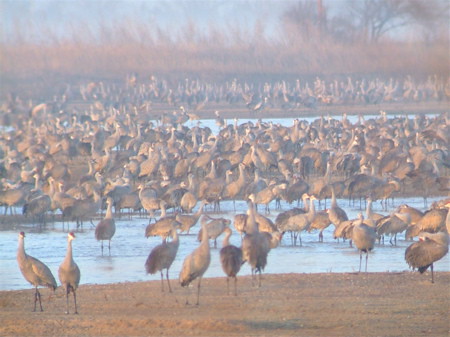Don't worry, this post isn't all shorebirds.
 On a Friday I was watching these little semi-palmated plovers squabbling on a beach and then the very next day, I'm watching them on a mud flat in western Minnesota...
On a Friday I was watching these little semi-palmated plovers squabbling on a beach and then the very next day, I'm watching them on a mud flat in western Minnesota...
And getting prickly pear cactus paddles stuck on my leg--owie. Yes, we do have a couple of cactus species growing in Minnesota, you can see them at Big Stone NWR. I went with Stan Tekiela and a group from Staring Lake Outdoor Center in Eden Prairie. These are fun, low key trips where we see some great birds...
...and local color like the Biggest Ball of Twine in Minnesota (if you're wondering if this is the famed ball from Weird Al Yankovic song, it is).
We also stopped at the headwaters of the Minnesota River. Which was chock full of American white pelicans.
They were fishing right at the dam--I think I have a video of it, I'll see if I can dig it out of the external drive and load it later today. These were some urban birds. They did not care about us coming too close at all.
Usually white pelicans around the state are a bit cautious of humans, but these dudes just didn't care.
The fishing must be that good...and hopefully not too polluted right at the headwaters, unlike some of the other parts.
 I got a kick out of seeing a band on one of the pelicans, perhaps this is a bird that I banded? If I didn't do it, I'm sure it's part of that same colony, it's very close to the Minnesota Headwaters.
I got a kick out of seeing a band on one of the pelicans, perhaps this is a bird that I banded? If I didn't do it, I'm sure it's part of that same colony, it's very close to the Minnesota Headwaters.
We were hoping to find some shorebirds while we were out here, since Amber and I went on the shorebird workshop and had a great time last year. The weather had not been as cooperative this year. There was a big storm a few days before we arrived and all the prime mud flats were now ponds--not the best stopover for migrating shorebirds. We did find some like the least sandpiper above. The storm damage was incredible. The locals said there were 80 mile an hour winds and it showed in shredded corn fields, barns missing chunks of roof, and LOTS of trees down.
We went to Salt Lake right on the Minnesota/South Dakota border and found more shorebirds there like the Wilson's phalaropes (and lone pectoral sandpiper) in the above photo. It had the best and most accessible variety of shorebirds on the trip including short-billed dowitcher and stilt sandpipers.
This group wasn't all about shorebirds either, and we found black terns and a single Forster's tern (above).
The big stars of the show for the group was the massive amount of swallows around Salt Lake. I tried to get a video of this, but it's so windy and shaky that I think people would get motion sickness if I put it up on YouTube. But see this little section of swallows, it went on for as far as you could see the fence line. There were literally hundreds of swallows of various species. We found bank, barn, tree, cliff, and northern rough-winged swallow all hanging out and staging on the fence.
There was also a family group of savannah sparrows on the fence too. They appeared to have one fledgling with them--go native sparrows! Squeeze in one more brood before you migrate south!
We were seeing quite a few flickers as well and there was a family group with some fledgling flickers too. Young flickers begging always throw me. Yesterday, I was biking a different trail and I heard some begging at first I thought it was a raptor begging, until I saw the young flickers. I have to say, if you are in the Twin Cities and like to bird and bike--the Cedar Lake Trail is GREAT right now. I can't believe the diversity of species right on the edge of downtown. I found a fledging red-shouldered hawk, an adult Cooper's hawk, a pileated woodpecker, red-eyed vireo, indigo bunting and I got dove at by a male bluebird guarding his nest box--it wasn't my fault, someone put the bluebird box right next to the bike trail. It was also encouraging to see another species going for the gold with a late nesting.
Now, I just need to find a way to attach my spotting scope to my bike handle bars so I can digiscope--then I'll be unstoppable!












